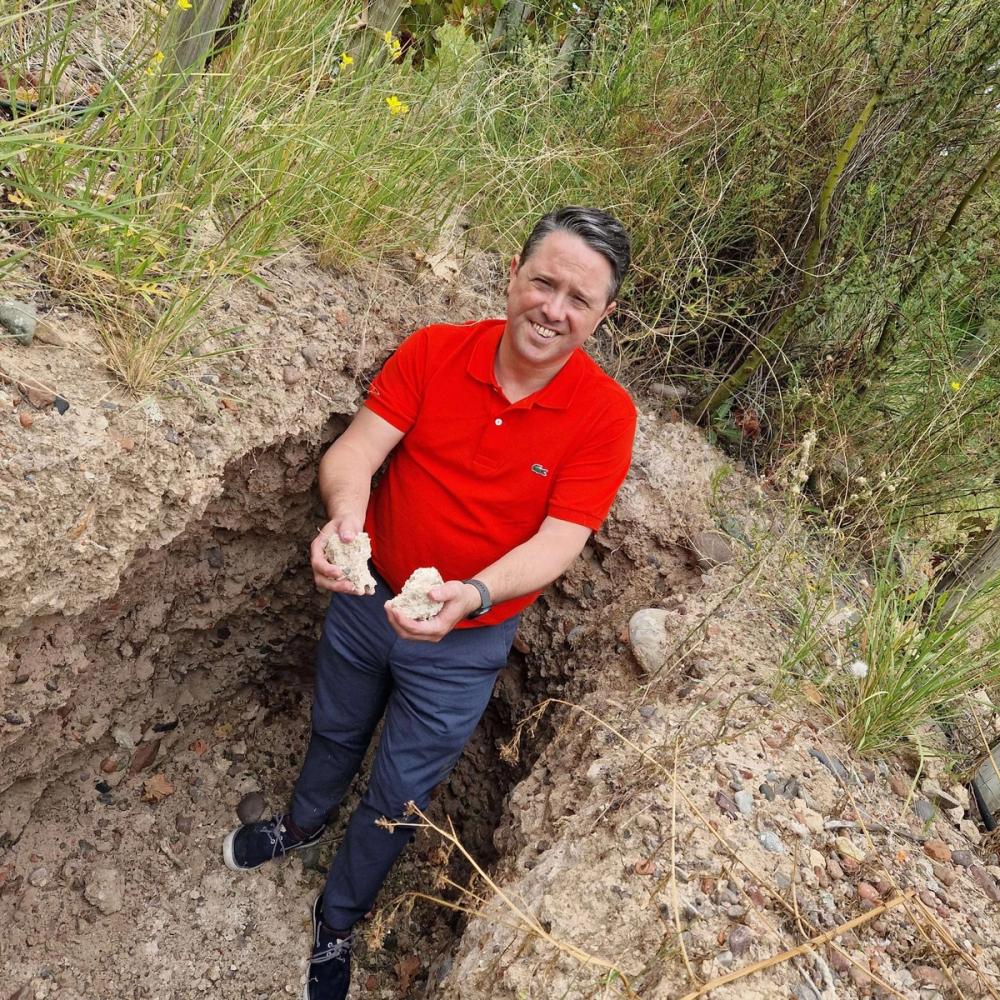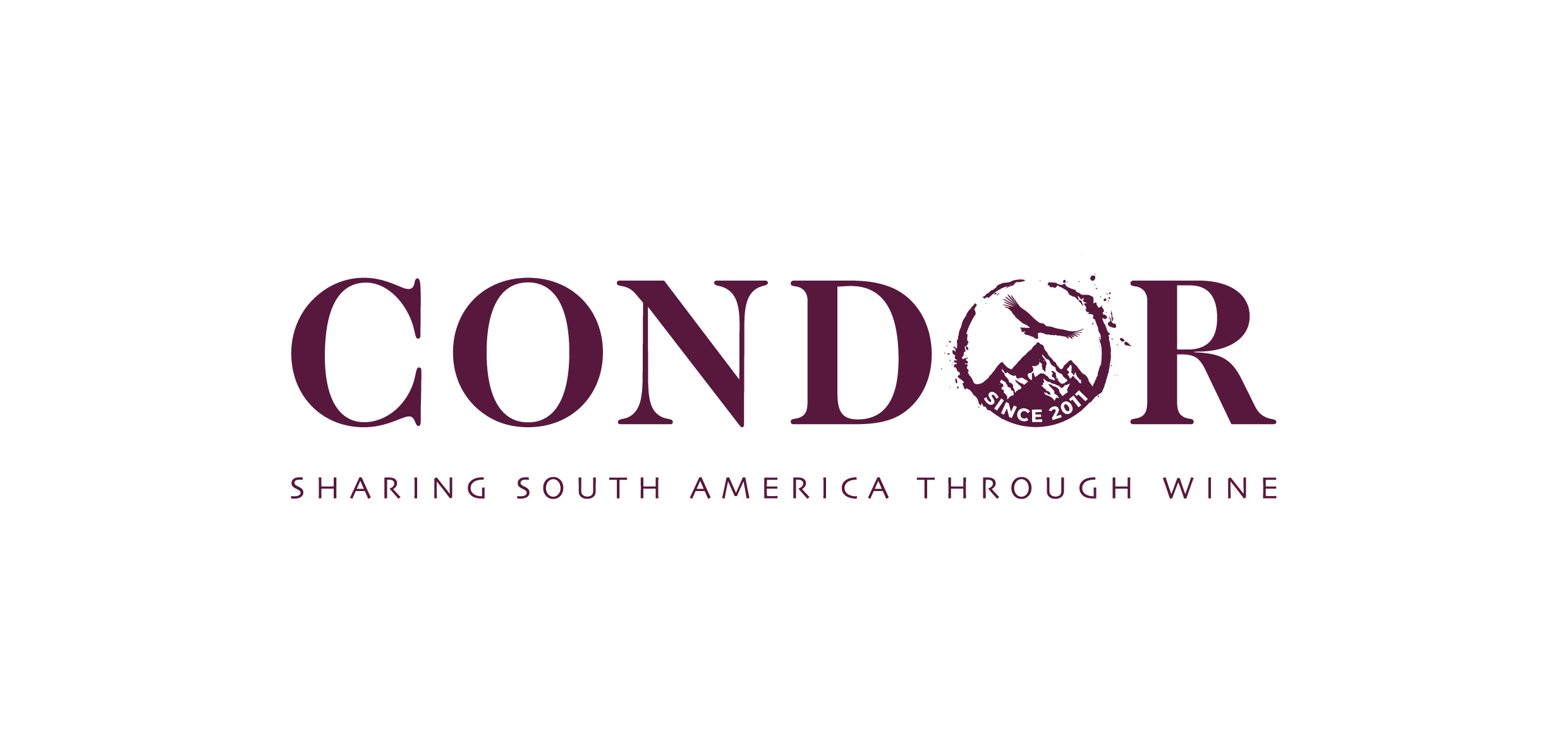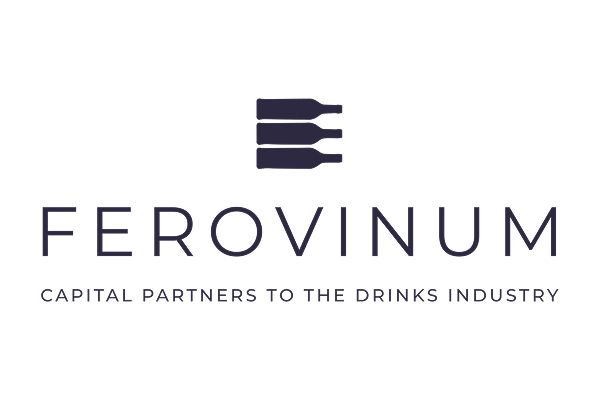What are your thoughts going into 2025 and what you see as the big opportunities you can build on for this year?
As we look ahead to 2025, I’m filled with optimism. When we founded Condor Wines in 2011 we had a clear vision of how we wanted to structure the business, particularly in terms of the right people and core values. While the pandemic paused these plans, by 2024, we finally achieved our ideal structure, with the right individuals in key positions.
I'm excited to see the impact of this in a full year, and it gives me great confidence for 2025 and beyond. A strong portfolio is essential, but having the right team to support every aspect of the business - from supply chain to customer service - will be key to our continued success.

Lee Evans has made Condor Wines one of the leading and most influential importers of South American wines in the UK
We’ve also worked hard to curate a well-balanced portfolio, combining essential commercial wines, interesting examples of core varieties, and unique "attention-grabbing" surprises. This has been possible thanks to our deep expertise in our regions and strong partnerships with producers who share our values. With both a strong team and portfolio, I am excited about the opportunities in 2025 and the growth we can build on from this year.
There are a lot of concerns over the big changes in duty rates happening in February - what specific steps are you putting in place to handle the extra administration and complexity of the multiple duty rates?
The upcoming duty increase in February is understandably concerning, and it’s frustrating that the government did not heed the concerns raised by the WSTA and others in the trade.
Over the past 18 months, we've been in constant discussions with our producers about the impact of these changes. Many have attempted to reduce alcohol levels, but this is particularly challenging in the warmer regions we work with. We've encouraged producers to focus on consistency across vintages, and while some reductions have been made, quality remains our top priority. We won’t compromise on the style or quality of wines, as we believe our customers and consumers would notice if, for example, their favourite Malbec lost its characteristic style just to lower the ABV.
To manage the new duty rates, we've already taken proactive steps by reviewing forecasted sales and assessing the ABVs of both current stock and wines in the pipeline. We’ve settled on an ABV that we believe will cover the majority of our 2025 sales. We began tracking and recording ABVs earlier this year, and we now have a system in place to ensure consistency, which is crucial for maintaining customer trust and satisfaction.
We're confident this approach will help us navigate the additional complexity and administrative demands efficiently.
Will you be actively looking to source lower ABV wines and if so what ABVs are you looking for?
Yes, we are actively looking to source lower ABV wines where possible. Uruguay, for example, naturally produces wines with lower ABVs, and we already have wines in our portfolio with ABVs as low as 9%.
Our main Chilean producer has successfully reduced the ABV of most of their entry-level 2024 vintage to 12%. This reduction will allow us to pass on a saving of £0.02 to our customers starting on February 1 We’ve made sure the quality of these wines remains consistent with previous vintages, although for most of the range, the ABV reduction was only around 0.05%.
We will continue to focus on sourcing wines that satisfy both our high quality standards and the new duty requirements.
What style of wine at lower ABVs would you consider listing in terms of how they are made - spinning come vs other de-alcoholising methods?
We’ve explored a 10% Malbec that was de-alcoholised, and while it was decent, we found that removing the alcohol diminished some of the typical qualities and appeal of Malbec, so we decided not to move forward with it. Currently, the lowest ABV we’re seeing for entry-level reds is around 12.5%, and we may see this drop to 12% in the future.
I do have concerns that once red wines go below this level, we risk losing too much of their character, which is something we want to avoid. We’ll continue to assess lower ABV options but will focus on preserving the integrity of the wine’s style.
Do you see any risks to the overall wine category if we see more lower ABV and questionable quality wines in the UK market?

Lee Evans has been working with its South American producers to ensure consistency in alcohol ABVs across recent vintages
I believe there are already some questionable quality wines in the market, even before considering the commercial appeal of lower ABVs. As businesses look to capitalise on the price benefits of lower ABV wines, we’re likely to see an increase in these products. While this may offer more affordable options, it could also reduce the availability of higher-quality wines for consumers, which is a concern.
On the positive side, consumers are increasingly seeking lower ABV and alcohol-free wines, and this is a rapidly growing segment of the market. If this trend brings new consumers into the wine category, it’s something to be encouraged, as lighter, easier-to-drink wines can be a great entry point.
However, I do hope that ‘traditional’ wines remain available alongside these options, and we’ll need to work hard to ensure these wines continue to appeal to a broad range of consumers.
As you sell a lot of wines from South America do you see this as being particularly big problem for you?
While South America does present some challenges with lower ABV wines, it’s not a major problem for us. Uruguay, for example, naturally produces lower ABV wines thanks to its cooler maritime climate, and both Argentina and Chile offer cooler areas due to altitude and coastal influences. Plus, we’re also seeing more exciting southern plantings. This gives us similar opportunities as other regions in terms of producing lower alcohol wines.
That said, there are also many warmer areas in South America, some of which are large-scale production regions, where controlling alcohol levels will be more challenging. Although there is a growing consumer trend towards lower alcohol wines, the UK is unique in requiring this due to tax implications, so most producers are unlikely to make significant changes just for one export market.
In the long term, if these tax changes lead to a shift in consumer behaviour and lower alcohol wines become more popular, we believe we can still source high-quality wines to meet this demand. At the same time, there will always be a market for wines with naturally higher alcohol levels, and we are confident in our ability to offer both.
(Here is a promotional video that explains what Condor Wines is all about to its producers and customers)
Do you also see opportunities and ways in which you can help and support customers with these changes - If so how?
Yes, we see several opportunities to support our customers through these changes. Over the past 18 months, we’ve been working closely with our producers to reduce alcohol levels where possible without compromising quality.
We’ve also emphasised the importance of ABV consistency to help our customers manage pricing throughout the year. This is crucial, as frequent price adjustments due to ABV fluctuations would place unnecessary administrative and cost burdens on our customers, particularly in the on-trade sector.
To help with this, we began reporting ABV percentages on our price list and website in 2023, and we’ve increased visibility for our 2025 price list. Additionally, we track all ABVs internally with every shipment, and any changes are immediately flagged, giving us at least two months notice of any fluctuations.
Open communication with our customers will be key, especially since 2025 will likely be a learning curve for many in the industry. We're committed to staying ahead of these changes and keeping our customers well-informed throughout the process.
There is also the issue around increased Extended Packaging Responsibilities - what impact do you expect them to have and how are you planning for them?
The increased EPR requirements are a concern due to the lack of clarity around key details, particularly the associated costs, which will not be confirmed until after the scheme's launch.
While I fully support the overall goal of ensuring producers contribute to packaging waste management and working towards sustainability - something we already participate in through the current Waste Packaging Scheme - I believe there are still too many unknowns.
I stand with the WSTA in advocating for a delay in the launch of EPR. It is essential that we have all the details beforehand to ensure proper forecasting and adequate preparation. Without this, businesses like ours will struggle to plan effectively, which is especially concerning during such a challenging trade environment.
However, we must still prepare for its implementation. This means we've had to make some assumptions about potential costs. While forecasting without full information isn't ideal, we cannot afford to ignore the situation either.
How do you reflect on 2024 - what were the big moments for you as a business?
In 2024, some of our standout moments included taking a group of key customers to Argentina, marking our first trip since the pandemic. It was a great experience, and we're just finishing a successful Uruguay and Chile sales incentive. The winners will join us in March 2025, and it's been especially rewarding to see Uruguayan wines, like Albariño and Tannat, exceed expectations.
Our mission, 'Sharing South America through Wine,' truly comes to life when we take trade customers to the region to meet producers and experience these incredible places.
We’ve also continued to engage with customers through our popular 'La Diferencia Virtual' tastings, which we’ve run regularly since the pandemic (click on video link above). Each tasting, featuring wines from South America, is hosted by award-winning communicator Amanda Barnes, with participation from our winemakers. We send out over 50 completely recyclable tasting packs to trade customers across the UK, keeping our core focus alive and well.
We also completed a thorough supply chain audit with all our producers, including smaller boutique partners. This was vital for ensuring the robustness of our supply chain, meeting traceability requirements and improving sustainability efforts.
Where were you in terms of achieving your commercial goals and targets?
The weather up until June was poor and the cost-of-living crisis impacted consumer behaviour, with many choosing to travel abroad or remain cautious in their spending. This meant a challenging third quarter (July-September), when many of our customers in the on-trade wholesale channel faced tough conditions, but we focused on planning ahead and stayed optimistic.
This has paid off in the final quarter (October-December) which has seen a significant improvement which meant we hit our 2024 budget. It was a great finish to the year, and we're excited for what lies ahead.
What were the key reasons for those results?
The key drivers behind our results have been growth from both new business and existing customers, with our Chile and Uruguay incentive playing a positive role. This year, we've also noticed that customers have been more responsive to Autumn-Christmas promotions than in previous years.
I believe this shift is due to customers seeking maximum value, leading to higher sales of promotional wines. Recognising the increased pressure on our customers, we made a strong effort to enhance our promotional offers, and that strategy has clearly paid off.
What other major plans do you have for next year in terms of wines, ranges, events, tastings and activity in the trade?
We’re passionate about ‘Sharing South America through wine’ so we have plenty of events planned for next year. We’re continuing our hugely popular series of virtual tastings presented by Amanda Barnes, a brilliant way to taste with our winemakers face-to-face.
We’re also very excited that Amanda will host a new series of ‘La Diferencia LIVE events in London, the Midlands and the North, in addition to our usual support for SITT in February and a portfolio tasting in September. Plus, we’re looking forward to more of our winemakers visiting in the UK in 2025.
We’re also launching a new sustainability project aimed at better understanding our impact on both the environment and the communities we work with. This includes assessing our carbon footprint here in the UK and collaborating with our producers in South America. Our focus is on identifying ways to reduce our negative impact and improve how we manage our environmental footprint going forward.
When it comes to range, we’re constantly looking at new opportunities, particularly for countries outside of our current portfolio. We’re yet to find the right balance of quality and cost to add ranges from Brazil, Peru or Bolivia for example, but we’ll never stop exploring!
Anything else to say?
As we look to 2025, there are many legislative and tax changes ahead, and likely more to come. To stay well-informed and positioned to navigate these changes, we joined the WSTA in 2023, ensuring we’re in a strong place to manage them and keep our customers updated.
We’ve also supported WSTA campaigns and will continue to do so, as it's crucial for the industry to have a united voice. I encourage other businesses in the sector to do the same.
The WSTA has recently launched a support package for businesses with a turnover under £2m, offering membership at a reduced rate of just £250 per year. This initiative provides valuable advice and support to the thousands of SMEs in the industry, many of whom struggle to fully grasp the increasing pressures on UK alcohol businesses.
In partnership with the WSTA, we’ll offer a £100 subsidy to our customers in the first year, bringing the cost down to just £150, which is excellent value given the benefits of joining.
* You can find out more about Condor Wines at its website here.
































